Olea Nova works in a place that references art history and theory while investigating new materials and ideas that reflect her Russian heritage and a painterly sensibility that is remarkably relevant in this day of hyper-technology. The Comp Magazine recently visited Nova’s Pilsen studio for a delightful dialogue about her process and why her work is open to multiple cultural readings.
Can we start with discussing the place where you produce your artwork? In conversation, I referred to the studio as being a ‘sacred space’. How do you feel about this statement? Does where you work have an impact on your working process?
The studio is where I spend most of my time working and experimenting with images and objects. Often ‘ideas’ are in a very raw stage and during this time I like my work to be away from judging glances of other people. The size of my current studio makes possible for me to work on large pieces and I take this opportunity every day. My work gradually grows in size and sometimes, especially when I start crowding my canvases with high density marks, I wish I could make a painting the size of the whole world.
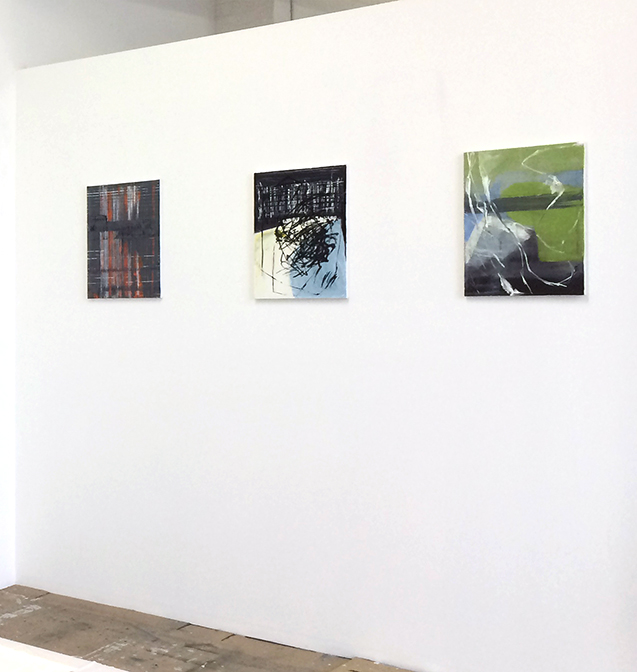
Olea Nova, Studio View, 2014
You grew up in St. Petersburg, Russia, studied at the University of Humanities and Social Sciences in St. Petersburg, then at the School of the Art Institute of Chicago. Have you noticed any changes in the way you think about and produce your work due to the impact of the city you live in?
In Chicago I often catch myself looking for places that remind me of St. Petersburg. I find such occurrences in industrial areas.
St. Petersburg today is a mix of Baroque, Neoclassical, Industrial and contemporary architecture. They exist in a polyphony as simultaneous possibilities of different ways of thinking about the world. One thing that the St. Petersburg I grew up in didn’t have, are large shopping centers with vast parking areas. A few years ago I made a series of works where parking and shopping plazas were the focus.
In conversation, you mentioned that there was an element of movement or dance in your work. Is this correct? Can you please describe this intersection between rhythm and the visual object is present in your painting?
During the course of making a small painting it moves from the table to the easel to the floor to the wall and then back to the table and it is constantly rotated in all directions. I don’t have such freedom with larger pieces, which I paint on canvases attached to the wall. Thus I end up moving around a lot, side to side, up and down, and diagonally. I move my hand in continuous motions, long and short, over the canvas often making wide movements with my arm and body across the entire surface. When I compare my movements to dance, I envision a sequence of uncomfortable and distorted positions.
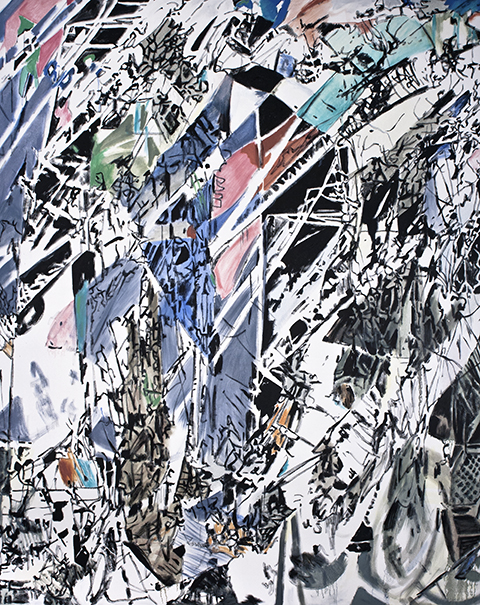
Olea Nova, The Distance of Meaning, oil on canvas, 90×72 inches, 2014
You work in a variety of media (e.g., painting, sculpture, sound, and video). Do you see an interaction or intersection between mediums? Or is the inclusion of newer media just relevant to the time that the work is produced in?
After I make an excursion into another media I usually attempt to bring something back from it into painting. I paint non-objective abstraction and consider myself to be first and foremost a painter. I took Kandinsky’s proposition that a painter could ‘apply the methods of music’ to art and decided to compose a piece of music to experience what it means to be a composer, to compose with paint vs. sound, musical or not. I ended up composing a few piano and experimental pieces. (“Anomalies” (piano)https://soundcloud.com/olea-nova/anomalies and “There” (experimental) https://soundcloud.com/olea-nova/there .)
With music there is no pressure to explain what it is about. My current issue is duration and spacing of notes. For me, that is what makes a piece unfold overtime, and that brings composing with sound very close to a cinematic image with its ability of opening up in time. Such opening, in my opinion, is very similar to the unfolding of thoughts, or visually taking up the surroundings to construct some kind of coherence. I would like the experience of ‘unfolding in time’ to be in my paintings.
My longest video project, still in development, is a 25 minute video titled “Go I not know where and bring back I know not what”. The title is taken from the Russian folk tale of the same name. I see this title as a metaphor to my painting process. In the process of making the video I looked for sound or music to the introduction and closing. I could not find anything already made and that is when I composed for the first time. At the time I thought about these musical endings as temporary features until I find a proper solution.
When I make objects it is something totally spontaneous that relates only to itself. Making works in other mediums lets me think of things I would not consider while working on a painting. In this sense I would say my different ways of making art are in a dialog with each other and I am hoping that they are expressing the same oneness.
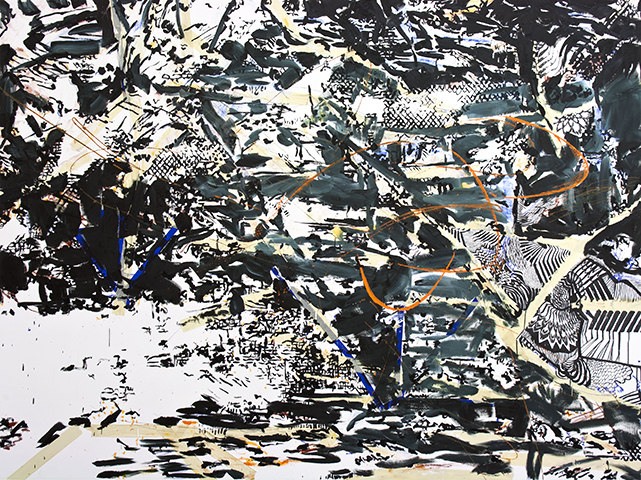
Olea Nova, Daily Morning, oil on canvas, 72×96 inches, 2013
You noted that Kazimir Malevich’s White on White, 1918, to be one of your favorite works of art. This is a difficult work for most people to initially respond to. Can you describe your interest in art history or the role it may or may not have played in your development as an artist?
Art history is one of my favorite subjects to study. I am aware that all meanings given to art at different times are already in everyone’s work including mine. This is not because I put them there, but because work will be evaluated from the position of art history, and existing systems of knowledge. I am always looking for symbolic meanings in objects made by people. I believe there is no point in intentionally illustrating ideas, however, every object made, including a painting, has a symbolic meaning that is not necessarily meaningful for culture.
When I think about what is attractive to me in whiteness I think about snow and long St. Petersburg winters. On the other hand, I like empty rooms with white walls, or walls in my studio with white primed canvases. I find so much potential in this whiteness, anything can develop within such white space. A finished painting is a possibility that embodied itself, a resolution of possibility, a work has assumed a form to which viewers, including myself, can relate in different ways. For me, Kazimir Malevich’s White on White paintings are a potentiality and an eloquent form at the same time. They speak to me about a possibility that is just starting to appear but is not yet clear, as if they tend towards clarity.
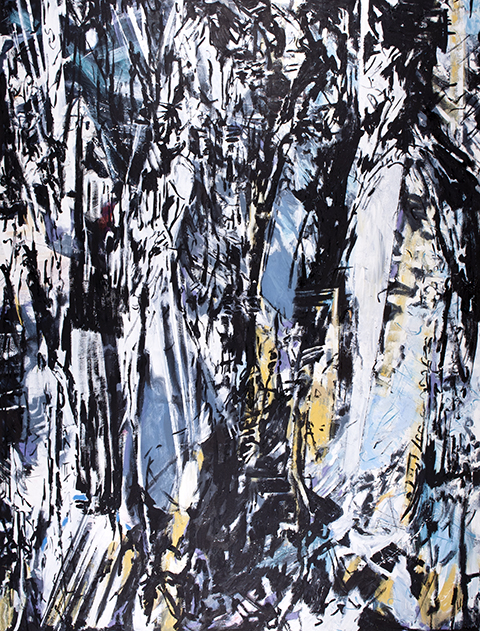
Olea Nova, Towards Understanding, oil on canvas, 84×64 inches, 2014
So, what’s up in the future?
If I rely on my metaphor for the painting process, then this is a question impossible to answer. I work on multiple projects simultaneously; some are years in the making and others for a few months.
For additional information on Olea Nova, please visit: http://oleanova.com/index.html
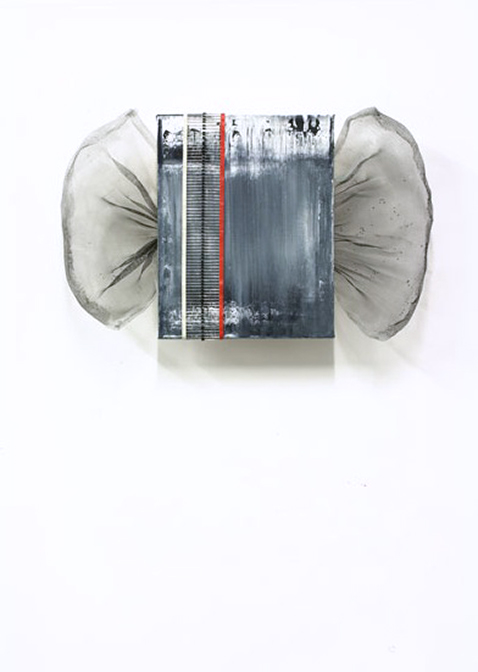
Olea Nova, object petit a, 2013
Olea Nova was born in St. Petersburg, Russia. She is a graduate of the University of Humanities and Social Sciences in St. Petersburg and the School of the Art Institute of Chicago. Her body of work spans the media of painting, drawing, printmaking, sound and video. Nova’s artwork has been exhibited at the Museum of Modern Art, New York, NY; The Art Institute of Chicago; NeoCon, Chicago, IL, the Chicago Cultural Center and widely throughout the Midwest.
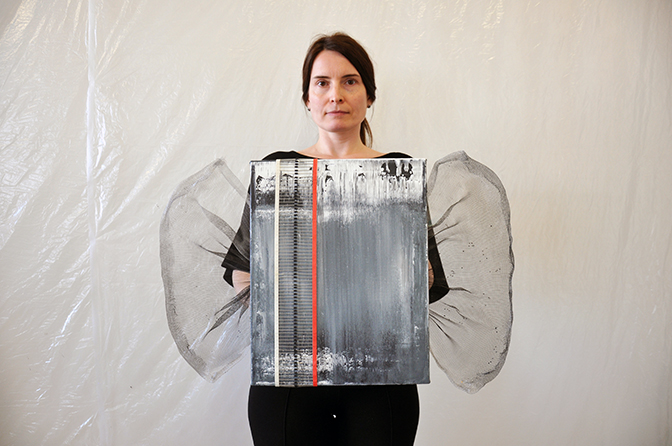
Olea Nova, artist, Chicago, IL, 2014
Interview and portrait by Chester Alamo-Costello


